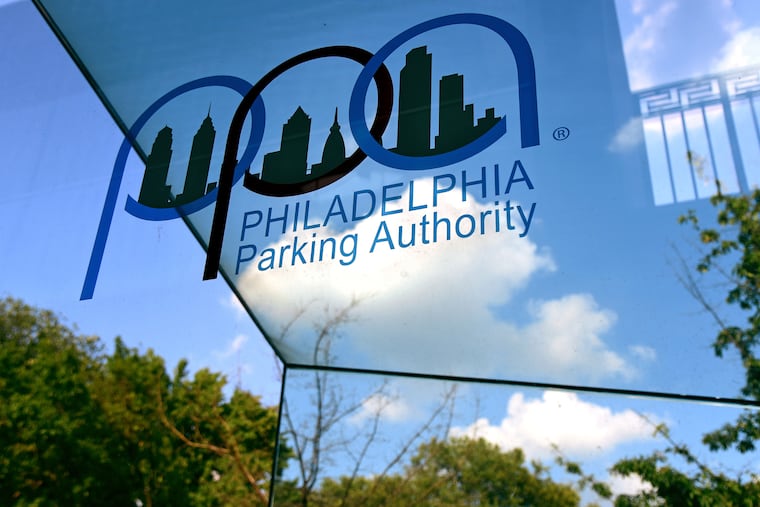Hopes for a new day at the Philadelphia Parking Authority | Editorial
As part of an overhaul, the new head of the agency is shifting its focus away from ticketing and toward tackling problems like speeding and abandoned cars.

The new executive director of the Philadelphia Parking Authority, former Deputy Mayor Rich Lazer, wants to change the way Philadelphians think about his agency.
Long reviled in many quarters of the city for its aggressive ticketing operation, the agency — at Lazer’s urging — is shifting its focus to tackling such quality-of-life issues as speeding and abandoned cars that have long vexed Philadelphians. If this pivot is successful, the parking authority could do more than just change its reputation; it could help make city streets safer for everyone, no matter how they get around.
For one, Lazer has focused on addressing one of the city’s long-standing problems: the plethora of abandoned cars on city streets. So-called “ghost” cars, which lack a readable license plate or vehicle identification number, had been a particular problem for residents, with the parking authority maintaining for years that ticketing them required the approval of a supervisor.
Not anymore. Neighbors and safety advocates have cheered Lazer’s move, a rare instance of public support for the parking agency. Beyond the annoyance of taking up spots that should be turning over regularly, ghost cars, like cars possessing fake temporary tags, have also been linked to violent crime.
In addition to making it easier to tow ghost cars, Lazer has also implemented a bike lane patrol, modeled after Toronto’s successful program. And this intervention is desperately needed. According to the Bicycle Coalition of Greater Philadelphia, eight cyclists died on city streets last year, the highest in over two decades. Keeping the city’s bike lanes clear of obstructions is a critical step in bringing that number down.
The parking authority can also be proud of the success of its speed camera program, which has succeeded in reducing speeding and saving lives along Roosevelt Boulevard, which was once known as the “Boulevard of Death.” Ideally, these cameras will be expanded to other troubled hot spots like Lincoln Drive, Kelly Drive, and Cobbs Creek Parkway.
In the near future, Lazer would also like to partner with the city to address what safety advocates call “daylighting” of intersections — clearing vehicles that are parked too close to intersections, blocking the sight lines of drivers. That step helps ensure that motorists, cyclists, and pedestrians all have a reasonable view of what’s coming before passing through intersections, something that isn’t always the case in many city neighborhoods, thanks to illegally parked vehicles.
Given that the city recently settled a lawsuit with disability rights advocates with a pledge to install 10,000 curb cuts over the next 15 years, ensuring that these interventions aren’t undermined by illegal parking is an important goal.
These efforts align with Lazer’s (and new board chair Lynette Brown-Sow’s) stated intention to reorient the agency’s goals toward public safety, rather than merely revenue generation. That’s another welcome change.
It is no secret that Philadelphia’s motorists have strong feelings about the parking authority. Some of those negative feelings are deserved, and many are related to its hard-nosed approach to generating as much revenue as possible, and its penchant for spending it poorly.
After a state takeover in 2001, the parking authority saw an increase in ticketing and revenues under former executive director Vince Fenerty and board chairman Joe Ashdale, who also served as the head of the painters union. The state’s auditor general labeled Fenerty an “unchecked tyrant,” and 10 of Ashdale’s relatives were hired by the parking agency. The parking authority became known as the last bastion of Republican patronage jobs.
After Fenerty was accused of sexually harassing employees, the parking authority hired Republican State Rep. Scott Petri, who lacked the necessary experience prior to taking the position. While patronage hiring slowed under Petri, his inexperience showed. When Petri sunk millions of dollars into an ill-advised new towing headquarters, then-Councilmember Helen Gym wondered if it was “malfeasance or monumental stupidity.”
While Lazer hasn’t been directly involved in parking management before, he spent years working with the agency and other regional planning organizations during his tenure in the Kenney administration, and his early actions indicate that he has a strong understanding of the role.
As a lifelong South Philadelphian, perhaps the section of the city most synonymous with illegal and hazardous parking jobs, Lazer has a firm grasp of the “pace, rhythms, and challenges of city life.” He also has known many of his agency’s hardest critics for decades.
Lazer will need to lean into that life story if he is to deliver the culture change around parking that the city and the parking authority desperately need.